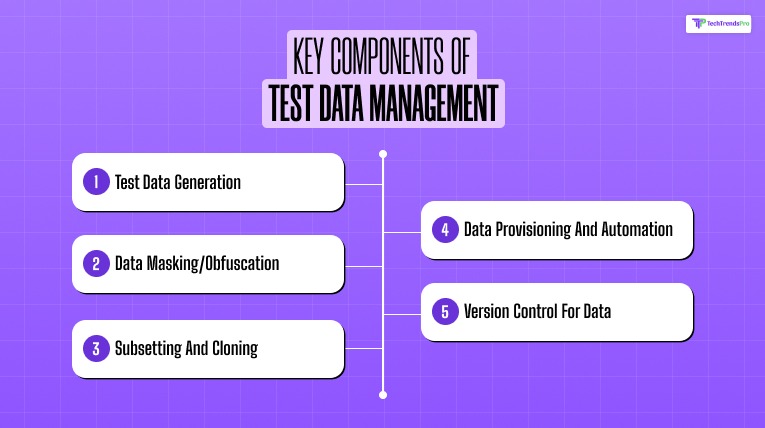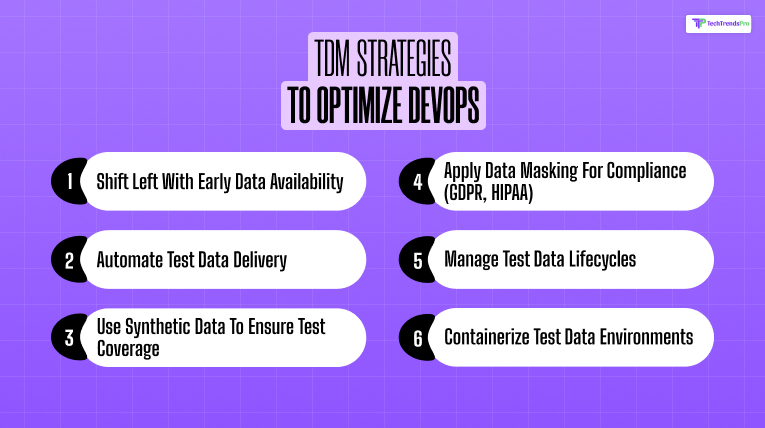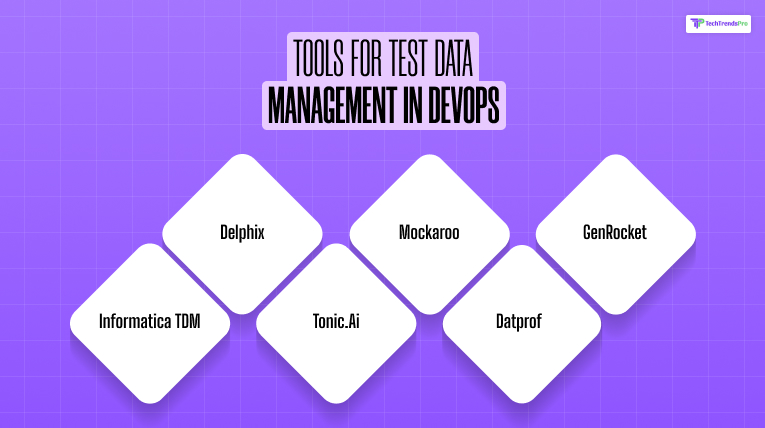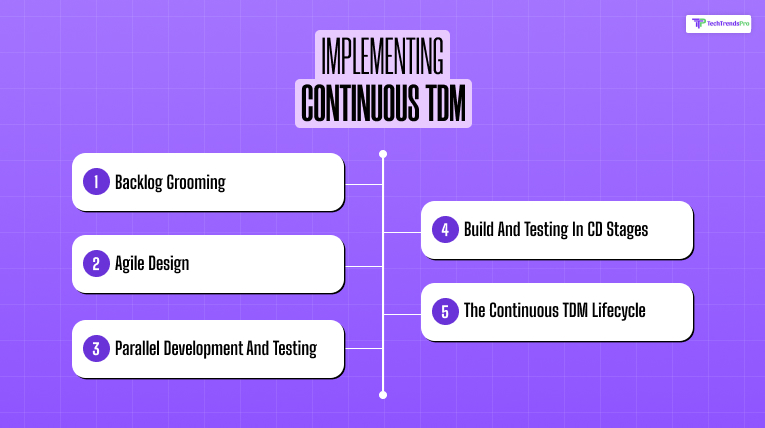
Do you need help with managing your test data in a DevOps environment?
You’re not alone; many organizations find this an ongoing challenge. In this article, we’ll guide you on optimizing Test Data Management (TDM) for DevOps, drawing from industry best practices and our own experience.
With the right approach, TDM can enhance your software delivery performance and compliance. So get ready, it’s time to turn the tide on test data management!
Understanding Test Data Management

Test Data Management incorporates tools and strategies to meet the data needs of software testing. In the heart of this process lies DevOps automation, which is significantly enhanced by a well-planned test data strategy.
As interfaces and APIs evolve over time, so does the need to maintain test data. Maintenance ensures that relevant updates or re-creations align with these changes.
This thoughtful test data management speeds up strategic initiatives like cloud integration and DevOps execution. The advantages extend past efficiency: it also improves compliance and access to data across all stages of the Software Development Life Cycle (SDLC).
Organizations must adopt robust strategies to manage test data to keep pace with continuous testing demands while ensuring compliance.
Why Test Data Management Matters In DevOps
In traditional software development, test data is often prepared manually, leading to delays, inconsistencies, and security risks. In DevOps, where continuous integration (CI) and continuous delivery (CD) demand speed and automation, inefficient TDM can derail the entire workflow.
Key Challenges Without Optimized TDM:
- Slow test cycles due to a lack of readily available data
- Incomplete or inaccurate testing with poor-quality data
- Security and compliance risks from using real customer data
- High resource consumption from full-size production data sets
- Inability to scale tests across environments (QA, staging, etc.)
Key Components Of Test Data Management

1. Test Data Generation
- Synthetic Data: Automatically generated data that mimics production environments without exposing sensitive information.
- Scripted Generation: Use of data generators or frameworks (e.g., Mockaroo, Faker) to create deterministic and reusable datasets.
2. Data Masking/Obfuscation
- Masking sensitive fields such as PII (personally identifiable information) or financial data from production datasets before reuse.
- Techniques: Substitution, shuffling, encryption, and nulling.
3. Subsetting and Cloning
- Extracting meaningful data subsets from production databases for faster test execution.
- Cloning environment-specific databases for parallel testing.
4. Data Provisioning and Automation
- Making data available through self-service portals, APIs, or infrastructure-as-code scripts.
- Tying data provisioning into test suite execution using tools like Jenkins, GitHub Actions, or GitLab CI.
5. Version Control for Data
- Just like code, test data can be version-controlled using Git or test data management platforms.
- Enables rollback, audit, and traceability.
TDM Strategies To Optimize DevOps

1. Shift Left with Early Data Availability
Ensure test data is available as early as possible in the SDLC (software development life cycle), not just before the QA stage. This supports early unit testing, API testing, and TDD (test-driven development).
Benefit: Catch defects sooner and reduce the cost of bug fixes.
2. Automate Test Data Delivery
Integrate test data provisioning with CI/CD pipelines. Use infrastructure automation tools (like Terraform, Ansible) and CI plugins to dynamically spin up test data environments.
⚙ Example: Trigger a Jenkins job that automatically masks and provisions test data before test execution.
3. Use Synthetic Data to Ensure Test Coverage
Instead of relying solely on production clones, generate synthetic datasets that cover edge cases, negative testing, and boundary conditions.
Synthetic data = broader test coverage without exposing sensitive info.
4. Apply Data Masking for Compliance (GDPR, HIPAA)
When using production data, it must be de-identified or anonymized to meet privacy regulations like:
- GDPR (Europe)
- HIPAA (USA)
- PCI-DSS (payment data)
Use automated data masking tools to replace real values with safe alternatives while preserving data relationships.
5. Manage Test Data Lifecycles
Define lifecycle policies:
- Creation
- Refresh frequency
- Expiration
- Archival or deletion
Helps avoid stale or inconsistent data that leads to flaky tests.
6. Containerize Test Data Environments
Use containers (e.g., Docker) to encapsulate test data environments. Combine with orchestrators like Kubernetes for scalable parallel test execution.
Tools For Test Data Management In DevOps

| Tool Name | Key Features | Test data subsetting, masking, and automation |
| Informatica TDM | Enterprise-grade, data masking & provisioning | Large organizations |
| Delphix | Virtualized data environments, masking | Compliance-heavy industries |
| Tonic.ai | AI-powered synthetic data generation | Realistic data simulation |
| Mockaroo | Quick synthetic data creation for dev/testing | Lightweight test data |
| Datprof | Test data subsetting, masking, automation | Mid-sized dev teams |
| GenRocket | Rules-based synthetic test data | Automated testing |
Most of these tools integrate with CI/CD platforms and offer APIs for automation.
Integration With CI/CD Processes
Integrating test data management with CI/CD processes is crucial for optimizing DevOps practices. By seamlessly integrating test data delivery into the CI/CD pipeline, organizations can ensure that the right data is available at each stage of development and testing.
This enables continuous integration by automating the process of provisioning test data, allowing teams to build, deploy, and test their applications quickly. With this integration, organizations can improve their overall test automation efforts and achieve faster time-to-market for their software releases.
Implementing Continuous TDM

Implementing Continuous TDM doesn’t have to be a pipe dream when there’s such a clear pathway to achieving it. Here’s how.
Backlog Grooming
Backlog grooming is crucial in implementing continuous test data management (TDM) for DevOps. It involves defining clear acceptance criteria for backlog items, ensuring that the dev/test team completely understands the requirements and expectations.
By continuously reviewing and refining the backlog, any changes or updates to requirements can be easily identified, allowing the appropriate tests to be flagged.
This helps maintain accuracy and efficiency throughout the testing process, making backlog grooming an essential practice for optimizing test data management.
Agile Design
With the widespread adoption of Agile methodologies, integrating test data design into the development process becomes essential for efficient software testing.
In Agile development, the emphasis is on adaptability and collaboration throughout the entire project lifecycle. This means that test data design needs to be flexible and able to evolve alongside changes in requirements or user stories.
Parallel Development And Testing
By running development and testing tasks concurrently, teams can ensure efficient delivery of complete data while maintaining compliance across different parallel teams. This approach is essential for running a fully automated test suite, as it requires the availability of production-like data for accurate testing purposes.
It’s worth noting that keeping up with evolving APIs and interfaces can pose challenges when updating or re-creating test data, both in terms of cost and complexity. Therefore, implementing parallel development and testing strategies becomes crucial for successful continuous Test Data Management (TDM) in DevOps.
Build And Testing In CD Stages
Continuous testing and test data management go hand in hand during the build and testing stages of Continuous Delivery (CD). In this phase, software developers integrate their code changes into a shared repository daily.
These changes trigger automated builds and tests to ensure the stability and quality of the software. Test data management plays a crucial role by providing realistic, representative, and diverse datasets for these automated tests.
Developers use version control systems during the CD stages to manage different codebase versions. They compile their source code into executable files or deployable artifacts as part of the build process.
The next step is testing, where developers run various types of tests, such as unit, integration, regression, and performance tests, on these artifacts.
By incorporating continuous test data management practices at this stage, teams can ensure access to up-to-date and appropriate test data sets for efficient testing.
The Continuous TDM Lifecycle
Firstly, prioritize test data provisioning by leveraging automated tools and processes to provide controlled access to the required data for testing efficiently. This helps modern teams involved in the Software Development Life Cycle (SDLC) have access to the necessary datasets at the right time.
Next, establish robust data access control measures to prevent unauthorized use or leakage of sensitive information during testing. You can safeguard confidential data by implementing strict controls and permissions while enabling effective software testing.
Additionally, it is crucial to incorporate compliant data management practices into your TDM process. Ensure that your test data adheres to relevant regulations and compliances specific to your industry.
This not only ensures legal compliance but also enhances the reliability of testing results.
Common TDM Pitfalls In DevOps (And How To Avoid Them)
| Mistake | Impact | Solution |
| Using full production datasets | Long test times, data privacy risks | Use subsetting + masking |
| Hardcoding test data in scripts | Poor reusability and scalability | Use data-driven or parameterized tests |
| Manual test data creation | Slowdowns and inconsistency | Automate with synthetic generation |
| Ignoring data refresh cycles | Stale, invalid test results | Set automated data refresh policies |
| No compliance policy | Regulatory fines, data breaches | Implement masking and audit trails |
Make Test Data A First-Class Citizen In DevOps
Test data is no longer an afterthought—it’s a core enabler of fast, secure, and reliable software delivery. As DevOps teams embrace automation and continuous delivery, optimizing test data management is essential to keeping pipelines flowing smoothly.
By adopting:
- Automated test data provisioning
- Data masking and compliance practices
- Synthetic generation techniques
- Self-service data access
…teams can reduce delays, improve software quality, and achieve true DevOps velocity.
Read Also:






